Rank Genus | ||
 | ||
Similar Plectocomia, Ceratolobus, Myrialepis, Daemonorops, Eremospatha | ||
Korthalsia is a clustering genus of flowering plant in the palm family spread throughout Southeast Asia. It is a highly specialized rattan with some species known to have an intimate relationship with ants, hence the common name ant rattan. High-climbing and armed with spines, the genus is named for the Dutch botanist P. W. Korthals who first collected them from Indonesia.
Contents
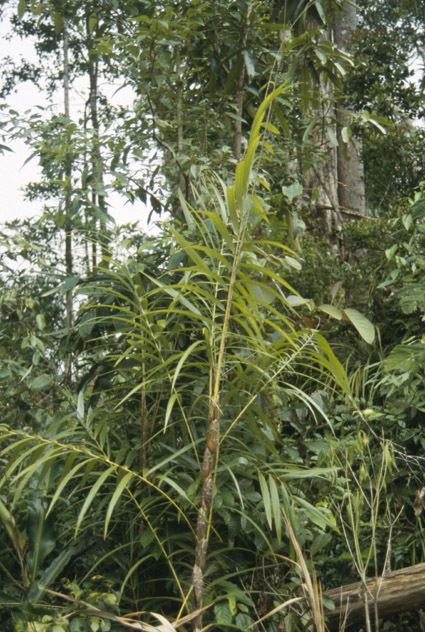
Description

In young plants the trunks, petioles and rachises are covered in spines. Mature plants typically lose rachis and petiole spines but will retain trunks spines in its new growth. The suckering stems are small to mostly moderate and are among the few in the palm family that branch; among rattans it is the only one with splitting stems. The trunks are bare at the bottom but retain persistent leaf bases in its youngest parts; enlarged paper-like appendages, ocreas, form where the petioles meet the stem. The ocreas are usually grossly swollen and house ants. Younger leaves are undivided with the occasional bifid apice. A truly pinnate leaf form comes in maturity and is accompanied by a barbed rachis extension which allows the palm to hook onto forest vegetation and climb to the canopy top where mature pinnae hang pendent. Also unique to the group are the rachis borne stalks, adapted for climbing, from which the leaflets emerge.
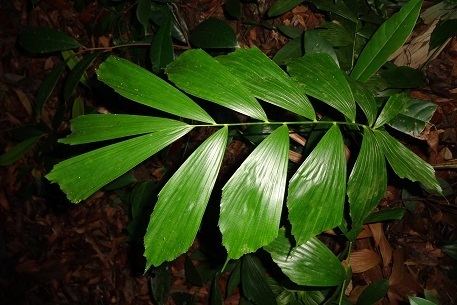
Sexually, they are hapaxanthic, another rare feature in palms, which results in the death of individual stems after flowering and fruiting has occurred. As hermaphrodites, the flowers are also uncommon with both male and female organs present in each. The inflorescence is short and thick, once or twice branched, with bisexual flowers hanging from long, furry stalks. Spherical to ovoid, the fruit is scaly and matures to orange, red or brown with one basally attached seed.
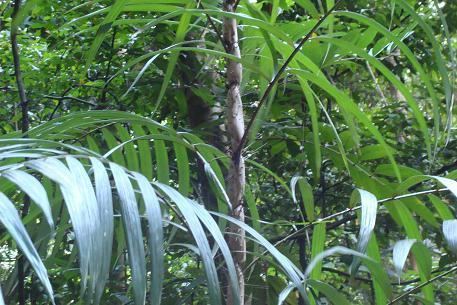
Fossilized pollen referable to this genus has been recovered in upper Miocene deposits in northwest Borneo; its long history, and its wide variety of unusual features may indicate its climbing habit evolved independently of other rattans.
Bees are observed visitors to the flowers while Anthracoceros convexus feeds on the fruit.
Distribution and habitat
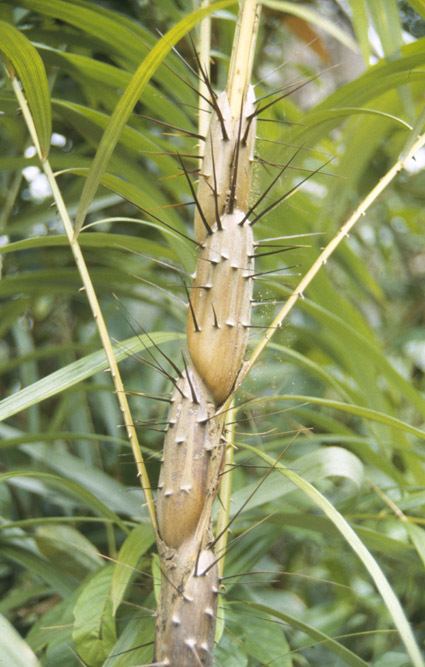
The genus is concentrated around the Sunda Shelf's perhumid region with northern outliers in Indochina the Andaman Islands and Burma and south to Sulawesi and New Guinea. They are confined to the tropics where they thrive in low land or hilly rain forest being conspicuously absent in montane regions; some are narrowly limited to ultrabasic rock while others are adept at colonizing cleared forests.
Relationship with ants
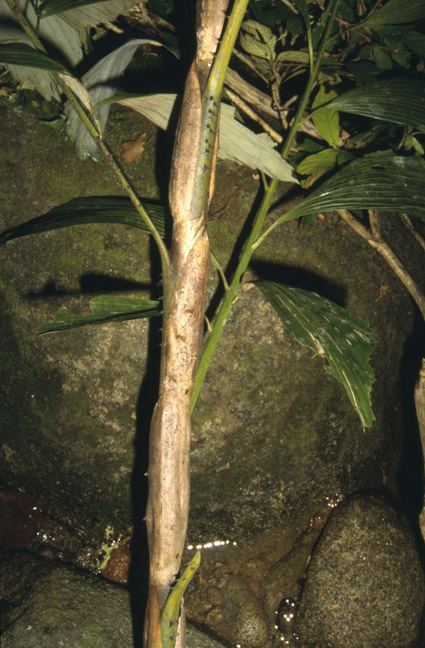
Ants of the Camponotus genus have an intimate relationship with several Korthalsia species, occupying chambers in the fibrous and swollen ocreas at the leaf bases. Here, the ants "farm" scale insects which feed on the palm’s phloem cells, and produce a sweet dew the ants feed on. The ants also beat their abdomens against the dry leaf bases to create a precautionary alarm rattle before attacking en masse. The relationship seems to be mutual, protecting the palms from herbivores.

The carnivorous plant Nepenthes bicalcarata as well as Macaranga caladiifolia and Clerodendrum fistulosum, grow alongside some Korthalsias in Borneo, and also feature swollen appendages in which ants nest. Other palm genera feature species known to harbor ants, including Laccosperma, Eremospatha, Calamus and Daemonorops.
Cultivation and uses
Their rarity in cultivation is likely due to their extreme spininess and their particular tropical needs. The stems and sheaths are made into rope, baskets and binding in house construction, but, unlike many other rattans they are irregularly knobby and scarred, which generally excludes their use in worked and polished furniture.
